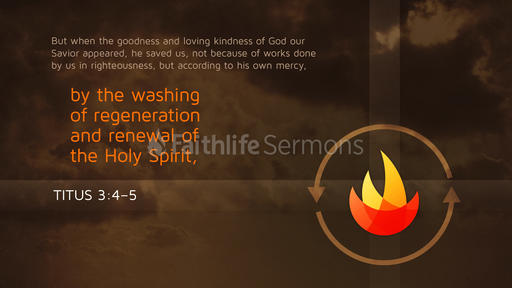4. Biblical Interpretation: Step 4-5
Biblical Interpretation • Sermon • Submitted • Presented • 51:22
0 ratings
· 34 views11/1/2020 @Hilltop Baptist Church
Files
Notes
Transcript
Handout
Sermon Tone Analysis
A
D
F
J
S
Emotion
A
C
T
Language
O
C
E
A
E
Social
Review of Step 3: Crossing the Principlizing Bridge
Review of Step 3: Crossing the Principlizing Bridge
Grasping God’s Word: A Hands-On Approach to Reading, Interpreting, and Applying the Bible Step 3: Crossing the Principlizing BridgeAfter reviewing the differences and identifying the similarities, return to the meaning for the biblical audience that you described in Step 1 and try to identify a broader theological principle reflected in the text, but also one that relates to the similarities between us and the biblical audience. In essence, the theological principle is the same as the “theological message” or the “main theological point” of the passage. (We will discuss in more detail how to develop theological principles in chapter 10.) We will use this theological principle as the principlizing bridge by which we can cross over the river of differences.
A good theological principle should...
A good theological principle should...
Be reflected in the text.
Be timeless; not tied to a specific situation.
Not be culturally bound.
Correspond to the teaching of the rest of Scripture.
Be relevant both to the biblical and contemporary audience
Step 4: Consult the Biblical Map
Step 4: Consult the Biblical Map
Grasping God’s Word: A Hands-On Approach to Reading, Interpreting, and Applying the Bible Step 4: Consult the Biblical Map
Question: How does our theological principle fit with the rest of the Bible?
Does our theological principle from Step 3 fit with the broader teaching of the Bible?
Does our theological principle from Step 3 fit with the broader teaching of the Bible?
Tools for Step 4:
Tools for Step 4:
Prior knowledge of Scripture
Parallel passages
Cross-references
Topical or Study Bible
Concordances, Indexes, etc.
Systematic and/or Biblical Theology
Example: Evaluating our theological principle from Joshua 1 in light of Scripture:
Example: Evaluating our theological principle from Joshua 1 in light of Scripture:
Theological Principle: “To be effective in serving God and successful in the task to which he has called us, we must draw strength and courage from his presence. We must also be obedient to God’s Word, meditating on it constantly.” (Duvall and Hays, p. 48)
Prior knowledge of Scripture: Can you think of passages which reflect the above principle?
15 “If you love me, you will keep my commandments. 16 And I will ask the Father, and he will give you another Helper, to be with you forever, 17 even the Spirit of truth, whom the world cannot receive, because it neither sees him nor knows him. You know him, for he dwells with you and will be in you. 18 “I will not leave you as orphans; I will come to you.
4 Abide in me, and I in you. As the branch cannot bear fruit by itself, unless it abides in the vine, neither can you, unless you abide in me. 5 I am the vine; you are the branches. Whoever abides in me and I in him, he it is that bears much fruit, for apart from me you can do nothing.
16 All Scripture is breathed out by God and profitable for teaching, for reproof, for correction, and for training in righteousness,
Parallel passages: Are there any parallel passages?
Mt. 28:18-20 (not exact parallel, but similar)
18 And Jesus came and said to them, “All authority in heaven and on earth has been given to me. 19 Go therefore and make disciples of all nations, baptizing them in the name of the Father and of the Son and of the Holy Spirit, 20 teaching them to observe all that I have commanded you. And behold, I am with you always, to the end of the age.”
Cross-references
12 He said, “But I will be with you, and this shall be the sign for you, that I have sent you: when you have brought the people out of Egypt, you shall serve God on this mountain.”
8 It is the Lord who goes before you. He will be with you; he will not leave you or forsake you. Do not fear or be dismayed.”
1 Blessed is the man who walks not in the counsel of the wicked, nor stands in the way of sinners, nor sits in the seat of scoffers; 2 but his delight is in the law of the Lord, and on his law he meditates day and night.
15 I will meditate on your precepts and fix my eyes on your ways.
Topical or Study Bible
Concordances, Indexes, etc.
Systematic and/or Biblical Theology
Conclusion: Yes, our theological principle fits with the broader teaching of Scripture
Grasping God’s Word: A Hands-On Approach to Reading, Interpreting, and Applying the Bible Step 4: How Does Our Theological Principle Fit with the Rest of the Bible?
The rest of the Bible consistently affirms that God’s people can draw strength and courage from his presence. In the New Testament believers experience God’s presence through the indwelling of the Holy Spirit rather than through his presence in the tabernacle. Likewise, throughout both the Old Testament and the New Testament God’s people are exhorted to pay close, obedient attention to his Word.
Step 5: Grasping the Text in our Town (Application)
Step 5: Grasping the Text in our Town (Application)
Grasping God’s Word: A Hands-On Approach to Reading, Interpreting, and Applying the Bible Step 5: Grasping the Text in Our Town
Question: How should individual Christians today live out the theological principles?
Seven Arrows (arrows #3-7):
Seven Arrows (arrows #3-7):
What does the passage tell us about God?
What does this passage tell us about man?
What does this passage demand of me?
How does this passage change the way I relate to people?
What would it look like in my life if I applied this theological principle to:
My marriage and family?
My workplace relations?
My relationship with other Christians?
What does this prompt me to pray to God?
Step 5: Applications from Joshua 1
Step 5: Applications from Joshua 1
Spend more time meditating on God’s Word by listening to Christian music as you ride in your car.
If God calls you to a new, scary ministry, such as teaching fourth-grade Sunday school, then be strengthened and encouraged by his empowering presence. Be obedient, keeping a focus on the Scriptures.
If you are in a church leadership position, realize that successful Christian leadership requires strength and courage that flows from the presence of God.
Don’t depend upon your own strength when you engage in ministry or evangelism—PRAY!
Homework:
Homework:
Read Hebrews 6:1-8. Make some preliminary observations and do some research on the literary and historical context of the passage. Read the surrounding passages and get a feel for the author’s argument. Be prepared to present some of your observations and walk through the five steps of biblical interpretation together in church next week.
ADVERTISEMENT
Related Media
See moreRelated Sermons
See more

Church of Christ Green Bay • 129 views • 34:45


luis a. gonzalez • 1 view



